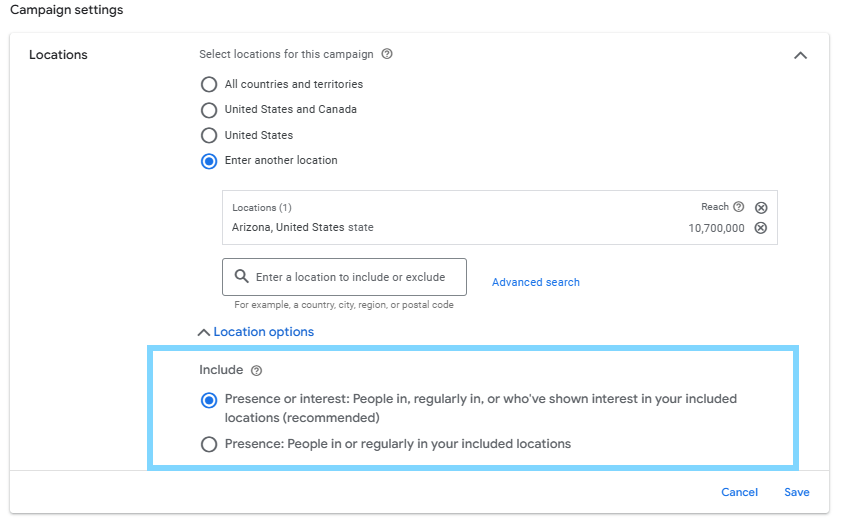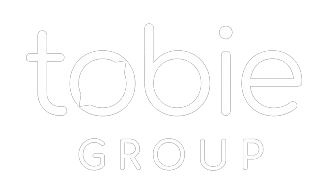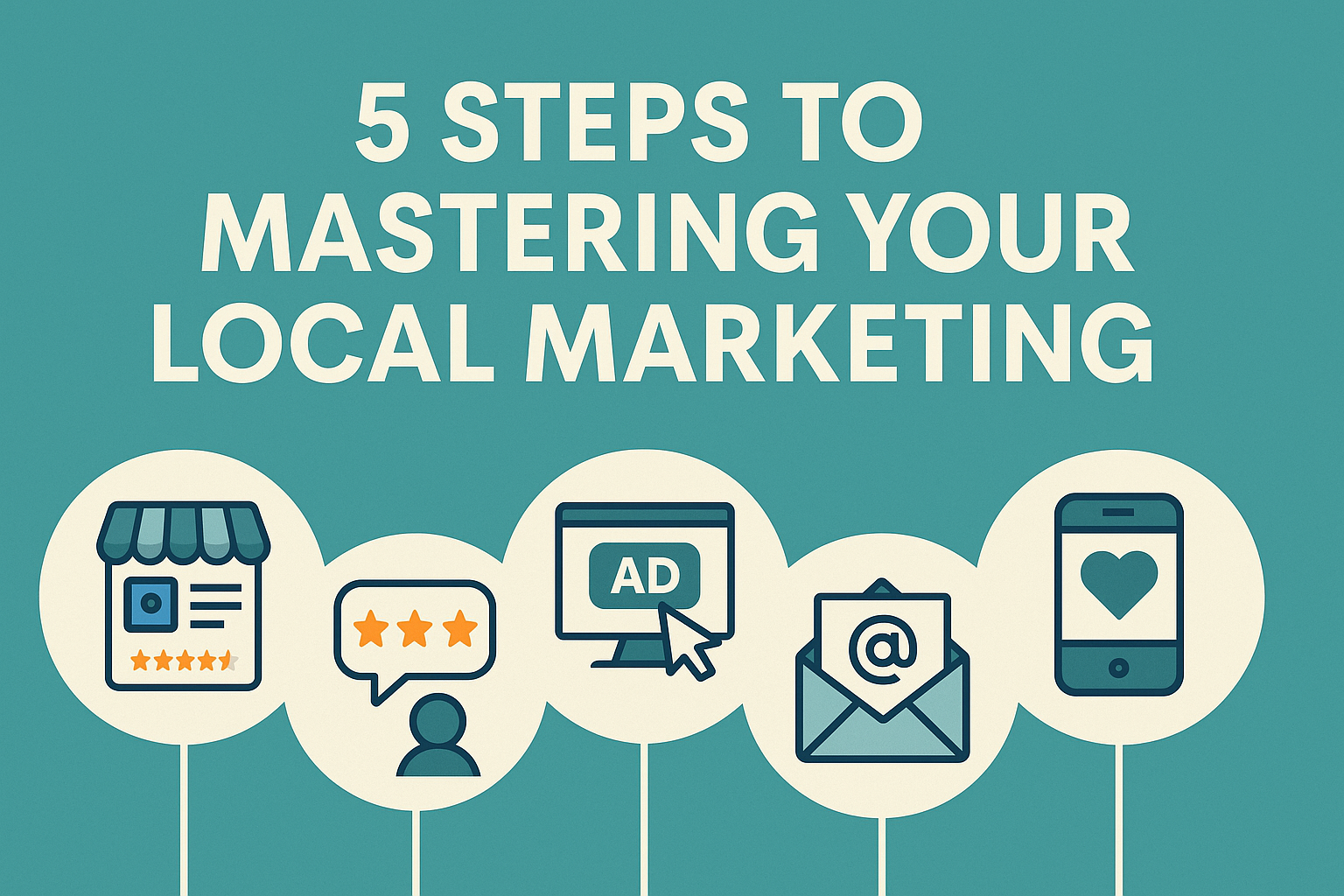It’s overwhelming to know where to start with local marketing. Between constant platform changes and the evolving needs of customers, many of our Arizona-based clients feel like they’re always trying to catch up.
From shifting social algorithms to an endless stream of so-called “best practices” on Google, the advice can feel outdated as soon as you try to act on it. On top of that, your business environment is changing too—new competitors, new service areas, and new customer behaviors.
But not everything is in flux. Some strategies still work. This guide outlines the foundational local marketing tactics we’ve seen perform time and again for service-based businesses in Tempe and across the country.
Step 1: Optimize Your Google Business Profile
Think of your Google Business Profile (GBP) as the digital storefront for your business. It’s often the first impression potential customers get, especially when they search on Google Maps. A fully optimized GBP is the centerpiece of your local presence.
Local Marketing Optimization Essentials
- Fill out every section completely: Include business details, services/products, FAQs, and attributes that help highlight what makes your business unique.
- Use Google Posts: Regularly share offers, updates, events, or product spotlights to keep your profile active and useful.
- Upload high-quality visual content: Post fresh photos and videos of your space, your team, and your work.
- Enable and respond to direct messaging: Customers expect fast answers. A quick response might win you the business.
- Review Insights regularly: Learn what search terms people are using, how they interact with your listing, and refine accordingly.
- Stay updated on new features: GBP is evolving constantly. Be the business that implements new features first.
Tobie Tip: You can find/set up your GBP by navigating to https://business.google.com/. We’ve written a blog post about managing this critical piece of your local business.
Step 2: Build Local Trust with Reviews, Replies, and Recency
Local buyers and leads trust local voices. Reviews are the digital version of word-of-mouth, and they carry weight with both customers and search engines. Don’t be afraid to solicit feedback.
Best Practices for reviews in local marketing
- Ask for reviews regularly: Don’t be shy. Most happy customers are glad to help if you make it easy.
- Respond to every review: A simple thank-you goes a long way. Address negative feedback with care and professionalism.
- Keep them fresh: Recency matters. Aim to consistently gather new reviews.
- Repurpose great reviews: Use standout testimonials on your site, in emails, or even in ad copy.
- Monitor multiple platforms: Don’t just rely on Google. Keep an eye on Yelp, Facebook, and any industry-specific sites too.
Tobie Tip: Don’t fake it. Most platforms have specific guidelines about requesting reviews, and will penalize you heavily if you’re found to be in violation of those guidelines. We like Brightlocal’s guide here that details some of the ins and outs of reputation management.
Step 3: Power Up with Local Advertising
Sometimes, organic reach needs a little help. Paid media can push your message to exactly the right people at the right time. Almost every digital platform includes the ability to leverage some aspect of local or hyper-local advertising. With the correct media plan, you can limit your budget while maximizing performance in your own backyard.
4 Local Advertising Channels to Explore
- Google Local Services Ads (LSAs):
- Appear above all other results for high-intent service searches.
- Show your reviews, business info, and “Google Guaranteed” badge.
- You only pay for qualified leads like calls or form fills.
- Hyperlocal Social Ads:
- Use Facebook and Instagram to target users within a few miles of your business.
- Mention local events, landmarks, or shared community touchpoints.
- Retarget visitors or email lists in your service area.
- Regularly review and optimize your performance.
- Paid Search with a Local Footprint:
- Use geo-modified keywords (e.g., “emergency dentist Tempe”) to capture local intent.
- Combine with ad extensions like location and callouts.
- Adjust bids for high-performing zip codes or neighborhoods.
- Connected TV (CTV) for City-Wide Impact:
- Target audiences by city or zip code via smart TV streaming platforms.
- Deliver highly visual branding or service messages to households.
- Combine with retargeting or QR codes for trackable results.
Tobie Tip: Be careful about your “local” targeting. Ad platforms are constantly trying to broaden their footprint. Be sure that your ad manager is identifying the proper intent of your targeting. For example, Google has two options when setting location targeting: “Presence or Interest” and just “Presence”. If the ad manager selects “Presence and Interest,” your targeting footprint may also target individuals who are showing “interest” in your location but might not actually live there.
Here’s how Google describes that scenario:
By default, your ads can show to people in, regularly in, or who've shown interest in your targeted locations. For example, if you own a bakery in Paris and choose Paris as a targeted location, your ads can show to people located or regularly in Paris, or to people who have expressed interest in Paris bakeries (now or in the past). Alternatively, you can use other location options to limit the location types you target.

Step 4: Cultivate and Nurture Your Local Customer List
You need a plan for keeping in touch with customers once people start interacting with your business. From phone calls, to purchases, or even attending an event, be sure to capture contact details and use them!
Local Marketing CRM and Automation Best Practices
- Use a CRM system: “CRM” stands for “Customer Relationship Management.” A good CRM will store customer and prospect information, helping you track leads, manage relationships, and segment your audience.
- Automate outreach: Set up automations to send follow-up emails, appointment reminders, service updates, or special offers.
- Capture contact info everywhere you can: Use forms, event signups, and lead magnets to grow your list. Every visitor is a potential customer.
- Nurture long-term relationships: Not everyone converts on Day 1. Stay top of mind through regular, relevant communication.
Tobie Tip: Most customer relationship management has been tied to people’s email addresses. However, texting is quickly becoming an even more popular way to keep in touch. Most platforms include texting functionality, but with an added cost. Be sure to weigh your business needs before sending a barrage of texts. For many businesses, it’s the perfect way to cut through the inbox clutter.
Step 5: Use Social Media, But Don’t Overdue It
We all scroll social media and hear stories about businesses that "went viral." And while those examples are compelling, they rarely tell the full story. The truth is, the energy and effort poured into creating social content very rarely delivers direct leads or sales.
But social media still matters. It’s the most public-facing representation of your brand. For many local customers, it’s where they’ll form their first impression. That’s why we recommend investing a reasonable amount of time in it, with a clear plan in place.
Social media shouldn’t be your only marketing channel, and it probably won’t carry the entire lead generation load. But it can build trust, reflect your brand’s personality, and give your local audience reasons to choose you over a competitor. Be realistic about what social can and can’t do for your business, and be deliberate about how you use it.
Social Media Best Practices
- Be local and relatable: Share updates, tips, and community involvement that matter to your customers.
- Engage thoughtfully: Respond to comments and messages, highlight real customers, and participate in community conversations.
- Don’t chase virality: The viral post you saw probably came after months (or years) of steady effort. Focus on quality engagement and visibility over massive reach.
- Use platforms that make sense: You don’t need to be everywhere. Pick one or two platforms where your audience already spends time and commit to doing them well.
Tobie Tip: We talk to clients a lot about the “three scroll rule” on social media. Someone evaluating your business may check your social platforms and “scroll three times” to ensure that 1) Your business is legitimate and 2) That your brand is aligned with what they are looking for. Not everyone has budget for tons of social content, and that’s OK. Do your social channels pass the three-scroll test?
Your Local Marketing Success Checklist
Ready to get started? We’ve pulled together a list of some of our favorite resources for local marketing. Download it today!


